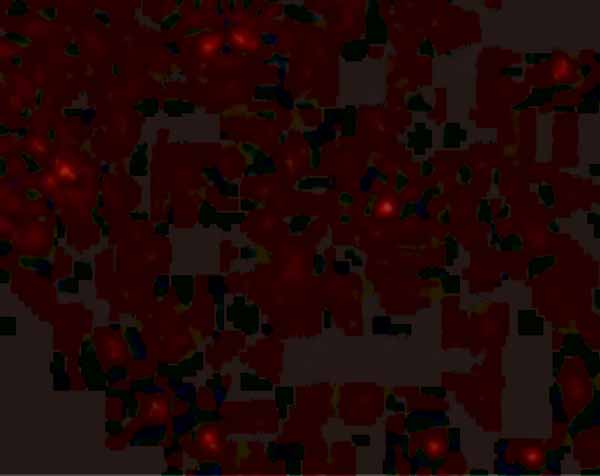Caspase-10 Antibody
- SPECIFICATION
- CITATIONS
- PROTOCOLS
- BACKGROUND

Application
| WB, E |
|---|---|
| Primary Accession | Q92851 |
| Other Accession | AAD28402, 843 |
| Reactivity | Human |
| Host | Rabbit |
| Clonality | Polyclonal |
| Isotype | IgG |
| Calculated MW | 58951 Da |
| Application Notes | Caspase-10 antibody can be used for detection of caspase-10 by Western blot 1 μg/mL. A 59 kDa band can be detected. |
| Gene ID | 843 |
|---|---|
| Other Names | Caspase-10 Antibody: MCH4, Caspase-10, Apoptotic protease Mch-4, CASP-10, caspase 10, apoptosis-related cysteine peptidase |
| Target/Specificity | Caspase-10 antibody was raised against a 17 amino acid peptide near the carboxy terminus of human Caspase-10. The immunogen is located within amino acids 240 - 290 of Caspase-10. |
| Reconstitution & Storage | Caspase-10 antibody can be stored at 4℃ for three months and -20℃, stable for up to one year. As with all antibodies care should be taken to avoid repeated freeze thaw cycles. Antibodies should not be exposed to prolonged high temperatures. |
| Precautions | Caspase-10 Antibody is for research use only and not for use in diagnostic or therapeutic procedures. |
| Name | CASP10 |
|---|---|
| Synonyms | MCH4 |
| Function | Involved in the activation cascade of caspases responsible for apoptosis execution. Recruited to both Fas- and TNFR-1 receptors in a FADD dependent manner. May participate in the granzyme B apoptotic pathways. Cleaves and activates effector caspases CASP3, CASP4, CASP6, CASP7, CASP8 and CASP9. Hydrolyzes the small- molecule substrates, Tyr- Val-Ala-Asp-|-AMC and Asp-Glu-Val-Asp-|-AMC. |
| Tissue Location | Detectable in most tissues. Lowest expression is seen in brain, kidney, prostate, testis and colon |

Thousands of laboratories across the world have published research that depended on the performance of antibodies from Abcepta to advance their research. Check out links to articles that cite our products in major peer-reviewed journals, organized by research category.
info@abcepta.com, and receive a free "I Love Antibodies" mug.
Provided below are standard protocols that you may find useful for product applications.
Background
Caspase-10 Antibody: Apoptosis is related to many diseases and induced by a family of cell death receptors and their ligands. Cell death signals are transduced by death domain (DD)- containing adapter molecules and members of the ICE/CED-3 protease family. A novel ICE/CED-3 protease was identified recently, designated FLICE2 and Mch4 and renamed as caspase-10. Caspase-10 has two death effector domains (DEDs) that bind to the DED in the adapter molecule FADD and recruits both TNFR1 and CD95 to form complexes with these receptors. Caspase-10 is therefore involved in the CD95 and TNFR1 induced apoptosis. Caspase-10 cleaves and activates caspase-3, -4, -6, -7, -8 and -9, which causes the proteolytic cleavage of many key proteins such as PARP. Cleavage of PARP occurs in many different systems during apoptosis and is the hallmark of programmed cell death. Caspase-10 is expressed in many tissues and cell lines.
References
Vincenz.C. and Dixit,V.M. Fas-associated death domain protein interleukin-1β-converting enzyme 2 (FLICE2), an ICE/Ced-3 homologue, is proximally involved in CD95- and p55-mediated death signaling. J. Biol. Chem. 1997;272:6578-6583
Fernandes-Alnemri T, Armstrong RC, Krebs J, Srinivasula SM, Wang L Bullrich F, Fritz LC, Trapani JA, Tomaselli KJ, Litwack G, Alnemri ES. In vitro activation of CPP32 and Mch3 by Mch4, a novel human apoptotic cysteine protease containing two FADD-like domains. Proc. Natl. Acad. Sci. USA. 1996;93:7464-7469
Cohen GM. Caspases: the executioners of apoptosis. Biochem J 1997;326:1-16 (RD1299)
If you have used an Abcepta product and would like to share how it has performed, please click on the "Submit Review" button and provide the requested information. Our staff will examine and post your review and contact you if needed.
If you have any additional inquiries please email technical services at tech@abcepta.com.













 Foundational characteristics of cancer include proliferation, angiogenesis, migration, evasion of apoptosis, and cellular immortality. Find key markers for these cellular processes and antibodies to detect them.
Foundational characteristics of cancer include proliferation, angiogenesis, migration, evasion of apoptosis, and cellular immortality. Find key markers for these cellular processes and antibodies to detect them. The SUMOplot™ Analysis Program predicts and scores sumoylation sites in your protein. SUMOylation is a post-translational modification involved in various cellular processes, such as nuclear-cytosolic transport, transcriptional regulation, apoptosis, protein stability, response to stress, and progression through the cell cycle.
The SUMOplot™ Analysis Program predicts and scores sumoylation sites in your protein. SUMOylation is a post-translational modification involved in various cellular processes, such as nuclear-cytosolic transport, transcriptional regulation, apoptosis, protein stability, response to stress, and progression through the cell cycle. The Autophagy Receptor Motif Plotter predicts and scores autophagy receptor binding sites in your protein. Identifying proteins connected to this pathway is critical to understanding the role of autophagy in physiological as well as pathological processes such as development, differentiation, neurodegenerative diseases, stress, infection, and cancer.
The Autophagy Receptor Motif Plotter predicts and scores autophagy receptor binding sites in your protein. Identifying proteins connected to this pathway is critical to understanding the role of autophagy in physiological as well as pathological processes such as development, differentiation, neurodegenerative diseases, stress, infection, and cancer.


